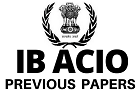sponsored links
What is Mixture ?
A Mixture is a solution containing two or more products (we can simply call these products as Elements of the mixture) which bear a certain proportion to each other by quantity. This may be expressed in terms of
- Percentage (ex : 25% of salt in water)
- Fractions (ex : A solution of water and milk such that: water : milk = 5:7)
 When you add two mixtures, the respective quantities of these elements of the mixtures get added, thereby affecting the overall contents of the combination. So, the resultant mixture would have "a weighted proportion" of the two elements.
When you add two mixtures, the respective quantities of these elements of the mixtures get added, thereby affecting the overall contents of the combination. So, the resultant mixture would have "a weighted proportion" of the two elements.
It is presumed that NO CHEMICAL REACTION takes place while the two mixtures are combined. So these are physical mixtures rather than chemical mixtures. (This clarification is for those chemical geniuses who thinks about EVAPORATION ;)
Rule of Alligation :
When two or more quantities of different products are mixed together to produce a mixture of a mean value, the ratios of their amounts are inversely proportional to the differences of their values from the mean value. Please re read the above statement. Its the heart of our concept.
Confused? lets read this in simple words...
If the gradients are mixed in a ratio, then
We can represent the above statement as
Then,
(Cheaper Quantity) : (Dearer Quantity) = (d - m) : (m - c)
Where can we apply the rule of Mixture and Alligation ?
- You can apply this when you have to find the proportion in which different ingredients of known value are to be mixed to produce a mixture of a given mean value.
- You can apply this when you have to find the mean value of a mixture when the proportion and value of its ingredients are known.
What types of questions can I expect from Mixture and Allegation for Exams ?
Ex :
500ml solution of water contains 10% of milk. How much pure water needs to be added to this solution in order to get the percentage of milk as 8% ?
Sol :
We can solve this problem using two methods. First we shall discuss solving this question using conventional method. Later we shall discuss the shortcut method.
Conventional Method :
Let "X"ml of water to be added to the solution
Water (ml) + Milk (ml) = Total
Solution (ml)
|
|||
Water
|
Milk
|
Solution
|
|
Original
|
(100
– 10)% of 500
=
90% of 500 = 450
|
10%
of 500 = 50
|
500
|
Add
|
X
|
-
|
X
|
Total
|
(450
+ X)
|
50
|
(500
+ X)
|
Now,
50/(500+X) = 8/100
(500 + X) = 625
So, X = 125 ml
Now lets have a look at the shortcut method,
Shortcut Method :
This method is applicable only when the impurity level of one of the components of the mixture is reduced in the resultant solution. This method makes use of only 3 values, as given in the question viz
- Quantity of Original Total Solution = 500 ml
- Original Level of 'Impurity' = 10%
- The desired level of 'Impurity' = 8%
now, the application proceeds as follows :
Quantity of pure water to be added :
(Difference in level of impurity/Required level of Impurity) X (Quantity of Original Solution)
=> (2% / 8%) X 500 = 125ml
So, 125ml water should be added to get 8% milk....
Thats all for now friends... We shall discuss some more problems on Mixture and Alligation tomorrow. Good Day and Happy reading :)
Liked this post? Read more shortcuts here










 English Vocabulary from
English Vocabulary from














Hi,
ReplyDeleteI want to know there is any got off for the PO exam like 60% aggregate made by IBPS for 2013 batch and when will the PO exam will be held in which month Please tell me
Thanking you
Vishnu
Actually that Rule is still under proposals stage and Not officially confirmed. But maximum chances are there for considering 60% as the minimum cutoff
Deletea very happy and a prosperous new year to all of you......
ReplyDeletey there is only one question solved??we need more questions..
ReplyDeleteadmin great effort ....THANKS A LOT.....
ReplyDeletethis is all very helpful for me
ReplyDeletesome examples must be given for better understanding .only shortcuts alone cann't make the whole content clear.
ReplyDeletemam plz upload problem on mixed alligation and profit and loss,
ReplyDeletePlease upload mixture and allegation problem and some more example problems
ReplyDeletemam plz upload some more problems.
ReplyDeleteIs there each sectional cut off marks among 4 section in SSC-CGL tier-1 ?????
ReplyDeleteplz give more problems of simple and compound interest
ReplyDelete